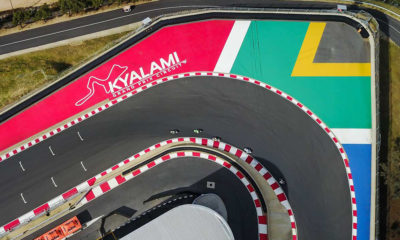
Formula 1 has undergone its most significant regulation overhaul in recent history for the 2022 season with clear benefactors emerging. After criticism for the original directive, it has been agreed upon that 2023 cars will have their floor edges raised by 15 mm to help mitigate porpoising in the name of safety.

Certain designs have gotten the recipe right, while others have struggled to grapple with the ground effect phenomenon but F1 teams have now compromised on the sport’s latest technical regulations. The FIA convened a Technical Advisory Committee meeting with team representatives after the Hungarian Grand Prix where an agreement was made to raise the car’s floor edges by no less than 15 mm.
This is all to aid the porpoising phenomenon which is a byproduct of the ground effect aerodynamic principle. Get to grips with the buzzword that became a central theme to the sport during pre-season testing earlier on in the year – watch this explanatory video here.
Earlier on in the season, the FIA had originally voiced that they would raise floors by 25 mm but more than half of the competing teams met this with strong opposition citing costly and unnecessary redesigns for their 2023 cars when they didn’t suffer from significant car bouncing at speed.
The two most vocal spokespeople around the controversy of the technical directive are Mercedes-AMG and Red Bull Racing team principals; Toto Wolff and Christian Horner. Wolff opened by stating that the FIA has commissioned medical work on proposing, citing that: “The summary of the doctors is that frequency of 1-2Hz, sustained over a few minutes, can lead to brain damage. We have 6-7Hz over several hours.”
Following this statement, Wolff made the demand that the FIA needs to do something about it while rival team principal, Horner, is adverse to the new regulations. The indomitable performance of the Newey designed RB18 at the hands of Max Verstappen is partly due to minimal porpoising at its lowest possible ride height.
Related: Honda e Limited Edition gets Max Verstappen’s stamp of approval
When speaking to RacingNews365.com; Horner stated: “[15mm] is not as good as leaving it alone, [but] it’s not as bad as the 25mm that was originally [suggested]. It’s a compromise that we’re just going to have to incorporate for next year.”
Horner went on to insinuate that this new directive isn’t centred around safety and promptly brought up the rollover accident of Zhou Guanyu in Silverstone, where the protective structure of his Alfa Romeo disintegrated stating that this was more of an imperative around keeping the drivers’ safe.
The new technical directive for the 2023 cars has been met with controversy, both by F1 teams and fans alike since the obvious solution for cars suffering from the potential health risk would simply be to raise the height of the floor, at the detriment of performance.




